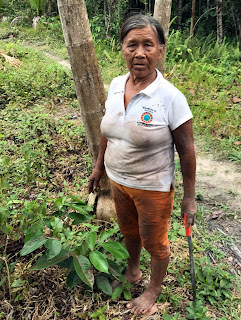Recently, I experienced a vivid flashback to a warm winter afternoon in Israel, fifty-or-so years ago. I, a brash engineering student, in my mother-in-law's spacious kitchen, hotly debating her assertion that sugar is a poison. As we talked, she leisurely spread a thick layer of shmaltz (clarified chicken fat) on a slice of bread. When done with the bread, she snuck a few more bites out of the schmaltz dish, then lit a cigarette. Along with the rest of the family, I abandoned the effort to admonish Savta (grandma) Hanka for her dangerous habits of fat consumption or smoking. We knew the usual retort, "I will not die young!" She was about fifty, at the time.
In the following decades, the topic of nutrition seldom rose to the forefront of my attention. My health and weight were under control, and I had no reason to question the guidelines provided by the nutrition authorities: "Eat mainly carbohydrates, minimize fats, and avoid saturated fats"
Fast-forward to a cold winter in Seoul, 2017. I am furiously reading all I can about nutrition. It was Adi's illness that radically changed my interest. I considered chemotherapy to be the medical equivalent of the US carpet-bombing in Vietnam. I wanted to find a better way. First, for Adi to tolerate the "treatment", and then maybe, to replace it. When I realized that targeted cancer cures are still immature, I shifted my focus to nutrition. I examined (or skimmed) numerous
diet philosophies, ranging the alphabet from the Atkins diet, through Erkin, Ketogenic, Mediterranean, Paleolithic, and more. Each philosophy promised to burn fat, cure diabetes, reduce the risk of cardiovascular disease, and prolong the onset of Alzheimer's. They all had a charismatic spokesperson, an impressive research validation, and an enthusiastic group of followers. Not surprisingly, the Internet is full of long-running squabbles between the groups, each claiming to provide the best results. So how could they all be right? Diversity of opinion is common in science. Yet in this field, it seemed to be more pronounced. However, after I understood the difficulty of conducting conclusive nutrition experiments, I was no longer surprised by the rivalry.
Warning: The next paragraph is a somewhat technical description of research methods. Anyone not interested, or already familiar with the topic, feel free to skip it.
Two types of research procedures are typically employed in the Life Sciences. The more robust method is the Randomized Controlled Trial, the other is an Observational Study. In the controlled trial, groups are randomly selected from a large population. The random assignment ensures that they are statistically identical. One group may receive a new drug, while the other, the "Control" receives a similar-looking pill. Any difference between the results can be attributed to the effects of the drug. These studies are very expensive, and in the case of nutrition, often impossible. Instead, most nutritional research is based on observational studies of some segment of the population. To compensate for the lack of a control group, the researchers collect all the parameters that they deem relevant. The data is subjected to statistical analysis, searching for correlations. However, the fact that two parameters move together, let's say, people that consume more coffee, suffer more heart attacks, does not prove that coffee causes heart disease. It may be that a third, unmeasured parameter, is causing both effects. i.e. the heavy coffee drinkers, as a group, hold the more stressful jobs. (This point of logic, is often lost on newspaper reporters.) Observational studies are prone to several other errors, yet the causes of most infectious diseases, as well as the link between smoking and lung cancer, were discovered that way. In other cases, results were not so good. Hormone replacement therapy, which was recommended based on observational studies, caused the death of many women. The difference is that in the first examples, the effects were very large. When the effects are small, as is the case in nutritional changes, observational studies do not provide clear conclusions.
To summarize the previous paragraph: The majority of research papers in this field provide, at best, circumstantial evidence, not a "smoking gun". I reviewed the claims of the various plans. I studied the supporting research they presented, which as I read it, seemed very convincing, and then found out, with the help of the competing groups, why that research is not valid. Eventually, I came to my first observation.
- A nutritional philosophy or plan, no matter how strongly presented, is an opinion, not a scientific finding.
Which left me wondering why, with only weak evidence, do the diet gurus speak with such enormous certainty? Nonetheless, I found sufficient evidence to form my own opinions, which led to the flashback I described at the beginning of this post. I came to believe that Savta Hanka was right in two assertions,
- Sugar is a poison (I would say "Toxic")
- Fat will not kill you, nor will it make you fat. (Except for synthetic trans-fats, which are bad)
She was wrong in her third assertion.
- Fifty-years-old is still young.
Savta Hanka, my apologies.
P.S. She died after reaching ninety, and not from lung disease.
























